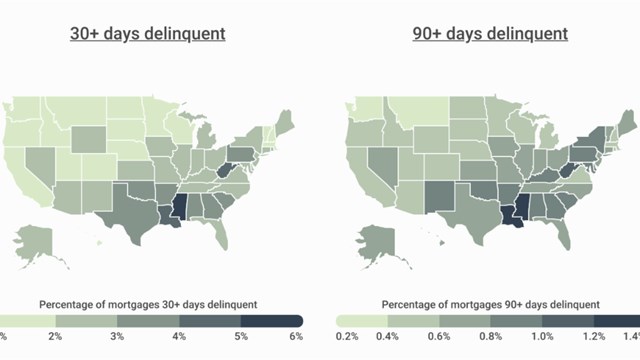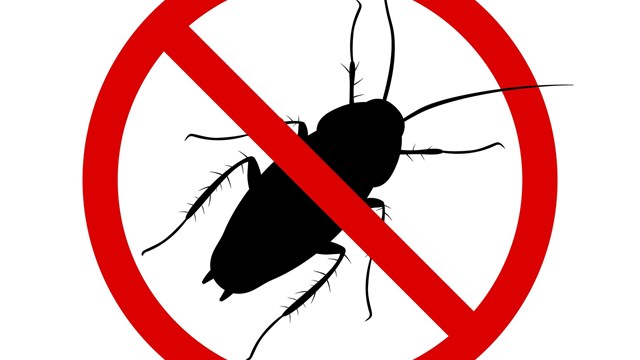Whether in a single-family home or an apartment building, every homeowner has experienced that moment: he or she turns on the kitchen light in the middle of the night to see a huge water bug scurry across the counter, or hear the sound of tiny rodent feet scampering behind the wall. It’s a feeling that can make you jump, recoil, or shiver - but contrary to what most of us would like to believe, bugs and other pests are not necessarily the result of sheer uncleanliness (although that can certainly be a factor). Vermin are a fact of life, or rather a fact of human coexistence. And changing seasons bring different types of pests, so knowing what to expect and when can give us higher mammals an edge in keeping our homes pest-free - even with the coronavirus pandemic complicating the process, along with just about every other aspect of maintaining multifamily buildings.
Even though having outside contractors coming into common areas and private units represents a health risk, an unchecked pest problem does too. Rodents and roaches produce allergens that can cause respiratory distress, and biting and stinging pests can trigger reactions in some people severe enough to require hospitalization - so foregoing regular visits from the exterminator out of concerns about COVID really isn't advisable. According to the National Pest Management Association (NPMA) "Although many businesses in communities worldwide have had to close their doors [because of COVID-19]...professional pest control has been recognized as an essential service by the United States Department of Homeland Security. This means [that] most pest control companies in the US are still working hard to protect our food supply and our critical national infrastructure, while also continuing to reduce the threat of pest-borne disease to homes and businesses."
So make certain your pest control professionals are well-versed and fully trained in CDC-compliant safety measures (masking, social distancing, and so forth) and let's take a look at some of the seasonal wildlife they'll be doing battle with as summer draws to a close.
Seasonality
Different pests may become more common at certain times of year, primarily due to climatic conditions. “Mother nature is unpredictable,” says Armando Martinez of Pest Control Chicagoland in Chicago. “Weather plays a big part. In the fall, we see an increase in occasional invaders such as centipedes, millipedes, silverfish and spiders. Rats and mice are occasional invaders, too, and often move indoors in the fall.” They don’t live in harmony though, he explains. “You can see both in one building, but not in the same part of the building.”
Rodents don’t want to be out in the cold, so they seek shelter often in homes and buildings for the winter - and this winter in particular may be a doozy when it comes to furry home invaders. According to the NPMA, the disruption of human movement patterns during the pandemic has also disrupted how some pests behave too - particularly rats and mice. In regions where many - if not most - people are staying indoors, there's less human traffic to deter rodents from venturing out (sometimes in broad daylight) to seek food and water. In the case of larger cities like New York or Chicago, the closure of restaurants - and the resulting empty dumpsters and trash cans - meant that a key food source for rats and mice disappeared almost overnight. Being the resourceful creatures they are, says the NPMA, "Without proper, ongoing pest control efforts, rodent populations will move from areas where businesses are closed, to areas where food and water are readily available,'...including residential buildings.
"Homeowners may see pests in new and different places during this period of change," the NPMA continues. "Pests are known to adapt easily to changes in environment, and are already quickly adjusting to our new normal. The tower of cardboard boxes waiting to be safely broken down from increasing home deliveries, as one example, make excellent hiding spots for pests in garages or next to trash cans." Eliminating attractive nesting/hiding spots can go a long way toward containing a major infestation problem.
Winged Nuisances
Not all pests are furry or have feelers. Though birds evolved in natural environments that provide cover and a food source, not all birds live in forests or the countryside. Any city dweller will easily recognize a pigeon.While that pigeon may live an urban lifestyle, it will still instinctively seek out nesting spots that mirror its historical nesting environment, such as ledges, overhangs and other nooks and crannies shielded from the elements. Rodents are similar; while the country mouse may burrow in a grassy field or forest, its citified cousin will seek out environments that mirror that field or forest in an urban landscape. (Think of that tempting stack of flattened Amazon boxes...)
Autumn is a particularly active time for pigeons, as they begin their nesting season as the weather begins to cool. Many city dwellers have a love-hate relationship with the hearty, ubiquitous birds, which are often seen as a symbol of the urban landscape and grudgingly admired for their ability to survive just about anything the city can throw at them. On the other hand, there are just as many people who call pigeons ‘rats with wings,' and find them - and their messy nests and droppings - gross and unhygienic.
Dan Wollman, the CEO of New York City property management firm Gumley Haft, reports that he has encountered problems with pigeons at several properties in Manhattan - particularly during the fall nesting season. “We had a building with a large interior courtyard on the Upper West Side,” says Wollman, “and we had to place a net across the entire courtyard at the roof level. There are certain elements in the courtyard that attract roosting pigeons.One appears to be shade.In another building courtyard we had a sidewalk bridge in a tight space, and the pigeons started roosting under the ledges where the bridge stood.They tend to roost in the shaded parts of buildings. In that case, we used three rows of plastic spikes glued to the windowsills so they couldn’t land safely.That was non-harmful and non-toxic to the pigeons.”
Stink Bugs, Ants, & Other Varmints
The Mid-Atlantic has its own set of particular pests, both unique and unsavory. One that gets particularly pesky in the autumn are stink bugs - so named because they give off an unpleasant odor when crushed. They are actually native to East Asia, and were introduced to the United States accidentally, as an invasive species.
“What stink bugs do in the autumn is overwinter,” says Sue Larson of the Haskell, New Jersey company Abarb Pest Services. Overwintering means they nestle themselves into crannies in your window and door frames and emerge in the spring. To alleviate the problem, fall is the best time to have your doors and window frames treated to prevent this. "The treatment is a dusting that goes around the frames," says Larson. "When the stink bugs come in contact with it, they die.”
Larson also mentions that advances in the development of treatments to fight ants have moved from repellents to attractants. There is now a gel product on the market that employs pheromones to attract the ants to it; the bugs contact the gel, then bring the poison in it back to the nest, killing off their little buddies.
Two major furry-footed pests that can become particularly problematic in New Jersey are mice and groundhogs. Larson has advice for dealing with those kinds of varmints as well. “Mice can become a major pest in the fall,” she says. “They are trying to escape the coming cold, and they can contract their bodies to the width of a dime – so you have to plug up every hole. Seal everything up.” She notes that they will also try to come inside during intensely hot days as well, so winter isn’t the only time it pays to have a properly-sealed house.
When it comes to groundhogs, Larson offers a unique, though old-fashioned, way of dealing with them.“There are usually three burrows,” she says, “one main entrance, and two egresses, so they can escape if need be. When you find the burrows, smash up some glass and place the smashed glass in the burrow and pour a bottle of hot sauce on top, then drop dirt back into the hole and stamp it down. I’ve done it, and it works!”
Tropical Troubles
Bob Michaelson of BBM Pest Control has been treating pest issues in and around Pembroke Pines, Florida for over 15 years. Given the Sunshine State's lack of distinct seasons, he fights pretty much the same pests year round, but says he sees an increase in two types of insects in the early autumn: bees and palmetto bugs. “Bees,” he says, “increase infestation activities that time of year due to rain.” He says he receives five to six calls a day that time of year for bees, while he might receive only two during the entire winter.
According to Michaelson, the bigger problem in the autumn is palmetto bugs. The name is something of a euphemism: palmettos are essentially giant cockroaches, and while they're harmless to humans, they're never a pleasant thing to encounter. Michaelson explains that palmetto bugs come into homes lured by the promise of just the right amount of moisture. “Later in the autumn, when there is little rain, they are so deep in the ground that when it rains they have to come up or drown – so they tend to come into houses,” he says. “Older buildings are more prone to palmettos than newer ones, because of changes in plumbing technology.”
Michaelson says that palmettos are the hardest member of the cockroach family to fight, because when they drop an egg sac, they don’t tend to stick around. “They leave, they go somewhere else, and when we catch them we never know where they left the babies.” He has even seen them infest a car. “The only way to control them is to seal up your property," Michaelson continues. "If you treat the home properly, you may still have openings in the roof, etc., which they can crawl through. So, it’s difficult to get rid of them permanently if the home isn’t airtight. Gaps or cracks are how they get in.”
Are Treatments Safe?
“The best control for these pests is by spray residual insecticides, used both inside and outside,” says Martinez. “Spray residual insecticides contain components that can kill both on contact and later, after the insects bring them back into the nest.” One big consideration overall in pest control is whether the chemicals used to repel or eliminate pests are safe for humans and pets. Truthfully, the door is still open on this subject, but much depends on the type of pest that’s being eradicated, the concerns of the residents, and the approach of the exterminator.
For his part, Wollman takes a broad view. “If you look at the chemicals used to control rodents,” he says, “the Department of Environmental Protection (DEP) has outlawed many which now can no longer be used – but that were effective. That’s led to a proliferation of rodents.” The question, he proposes, is whether one is willing to accept mice running around to avoid using possibly harsh chemical methods to fight them. He recommends a number of simple actions that can be undertaken to make your dwelling less attractive to rodents, including reducing access to your apartment by adding door sweeps on all doors, and eliminating drop ceilings if possible. (The spaces between dropped ceilings and overhead joists have been known to harbor everything from mice to feral cats, and even the occasional raccoon).
Whatever the season – or your particular pest issue – the refrain from the pros remains largely the same: make your home and property less attractive to the pest critters in your region. Treat an infestation the moment it’s discovered - and quiz your pest control professionals about their COVID-related protocols - and you’ll be less likely to turn on that kitchen light at two o’clock in the morning and come face-to-feelers with an uninvited guest.
A J Sidransky is a staff writer for The NJ Cooperator, and a published novelist.







Leave a Comment